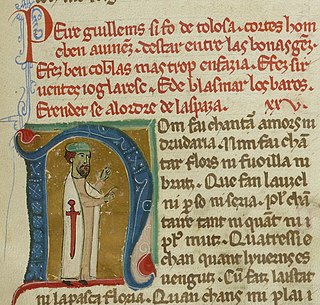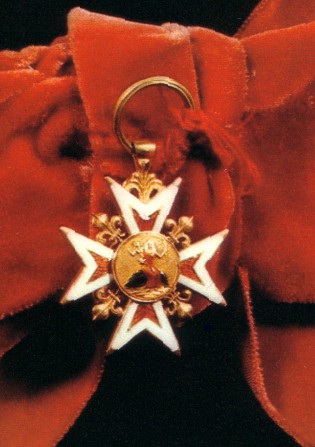Sources
- Gustav Adolph Ackermann, Ordensbuch, Sämtlicher in Europa blühender und erloschener Orden und Ehrenzeichen. Annaberg, 1855, p 209 n°83. "Orden des Löwen" - Google Books (Former orders of France : p. 205-214)
The Order of the Lion was an order of knighthood set up by Enguerrand I of Coucy (or, according to other sources, his son Enguerrand II), to keep alive the memory of his killing a dangerous lion. It was short-lived and was forgotten after its founder's death.
His successor Enguerrand VII founded the Order of the Crown in 1378
Gustav Adolph Ackermann mentions the two orders as among the historical orders of France.

The Order of the Annunciation, not to be mistaken with Savoy and Italy's Supreme Order of the Most Holy Annunciation, was a chivalric order founded in 1619 by Charles Gonzaga, Duke of Mantua and Montferrat, Duke of Nevers and soon flourished.

The Austrian Imperial Order of Leopold was founded by Franz I of Austria on 8 January 1808. The order's statutes stipulated only three grades: Grand Cross, Commander and Knight. During the war, in common with the other Austrian and later Austro-Hungarian decorations, crossed swords were instituted to reward bravery in the face of the enemy.

The Order of St Philip of the Lion of Limburg, is an order of knighthood established in 1700 by the Counts of Limburg-Stirum, sovereign rulers of the counties of the same name in Westfalia. With this order were rewarded persons of exceptional scientific, artistic or civil virtue.

The Ordre du Croissant was a chivalric order founded by Charles I of Naples and Sicily in 1268. It was revived in 1448 or 1464 by René I, king of Jerusalem, Sicily and Aragon, to provide him with a rival to the English Order of the Garter. René was one of the champions of the medieval system of chivalry and knighthood, and this new order was neo-Arthurian in character. Its insignia consisted of a golden crescent moon engraved in grey with the word LOZ, with a chain of 3 gold loops above the crescent. On René's death, the Order lapsed.

The Order of the Faith and Peace or Order of the Sword was a military order in Gascony in the mid-13th century.
The Order of the Ermine was a chivalric order of the 14th and 15th centuries in the Duchy of Brittany. The ermine is the emblem of Brittany. In the 20th century, it was revived by the Cultural Institute of Brittany as an honor for those contributing to Breton culture.
The Order of the Crown is an order founded by the northern French nobleman Enguerrand VII, Lord of Coucy in 1378 and belongs to the historical orders of France.
The Order of the Belt of Hope was a knighthood order which was founded in 1389 by King Charles VI of France and dedicated it to "Our Lady who bring back home the lost hunters".
The Order of the Passion of Christ was a French knighthood order which was founded in 1380 by King Richard II of England and in 1400 by his father-in-law king Charles VI of France. It was a crusader knighthood.
John I, Duke of Bourbon founded in 1414 the Order of the Golden Chains.
The 'Order of the Greyhound' was founded in 1416 in the Duchy of Bar. One also called this chivalric order, the "Order of the Faithfulness"

The Order of the Ladies of the Cord, was a ladies order founded by the French queen Anne of Brittany in 1498. This rope with knots had been added by her step-grandfather Francis I, Duke of Brittany to his arms in honor of St. Francis its patron saint and her father Francis II, Duke of Brittany had continued the emblem. The order was founded after the death of her husband king Charles VIII. The choice of name is not clear. Some sources speak of the node in the Scourge of the Savior, others from the cord of the sacred Francis of Assisi and still others of deliverance from the pressing duty of the unfortunate and involuntary marriage of Charles and Anna.
In 1369, Louis II "the Good", duke of Bourbon founded the Knights of the Golden Shield to commemorate the release from English captivity of noble hostages held along with the king John II of France. This release came in 1369, three years after the death of the captive king.

The Order of the Yellow Ribbon was founded in 1600 in Nevers by French-Italian nobleman Charles III, Duke of Nevers, nephew of the French king Henry III, and knights would be imposed very peculiar tasks.

The Order of Our Lady of Mount Carmel was founded in 1608 by Pope Paul V at the request of King Henry IV of France.
Gustav Adolph Ackermann was a German lawyer and author of a notable book on European knightly orders.

The Order of the Broom-cod, is believed to have been founded in 1234 by the French king, St. Louis IX, to commemorate his wedding with Margaret of Provence, daughter of Ramon Berenguer IV, Count of Provence, and her coronation. Other sources mention Charles VI the Beloved as the founder.
The Order of the Knights Bannerets was a French knighthood mentioned in a biography of Sir Robert Bruce Cotton, 1st Baronet (1570-1631) by Thomas Smith.
The Order of Christian Charity was, supposedly, founded in 1589 by the French King Henry III and was granted to disabled veterans.
The Order of the Ermine was a chivalric order created in 1464 by king Ferdinand I of Naples. The motto was "Malo mori quam foedari".